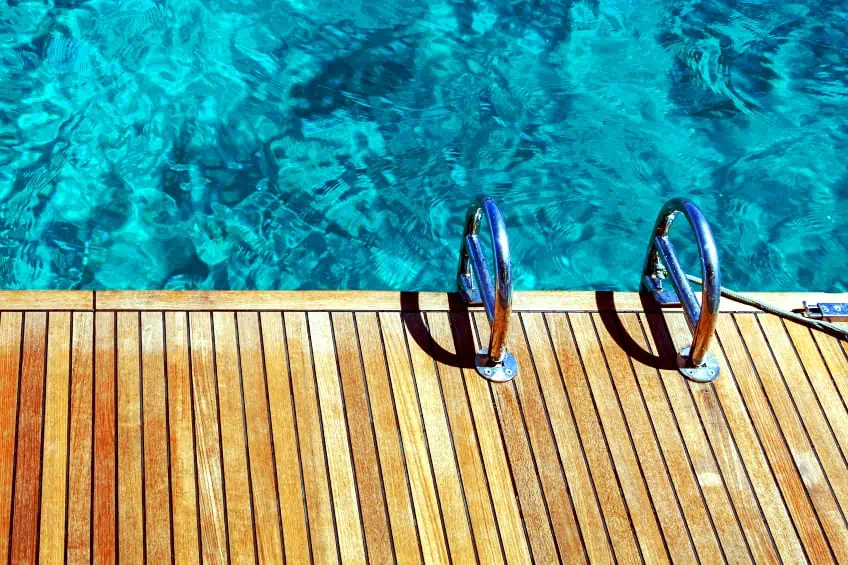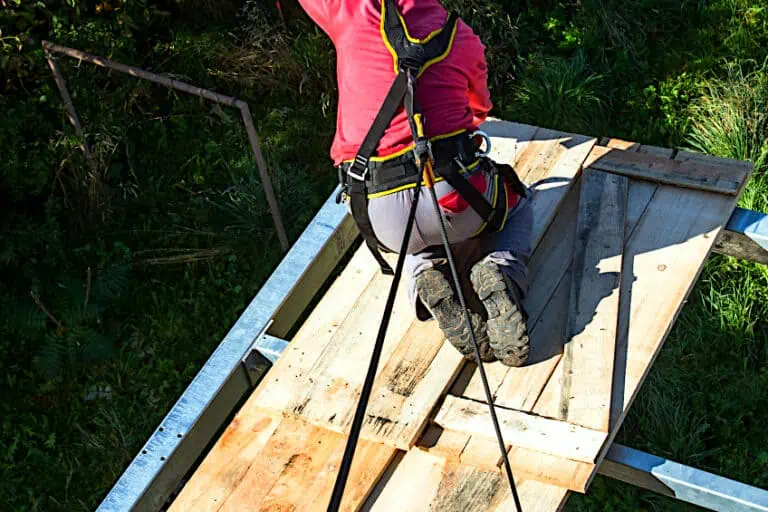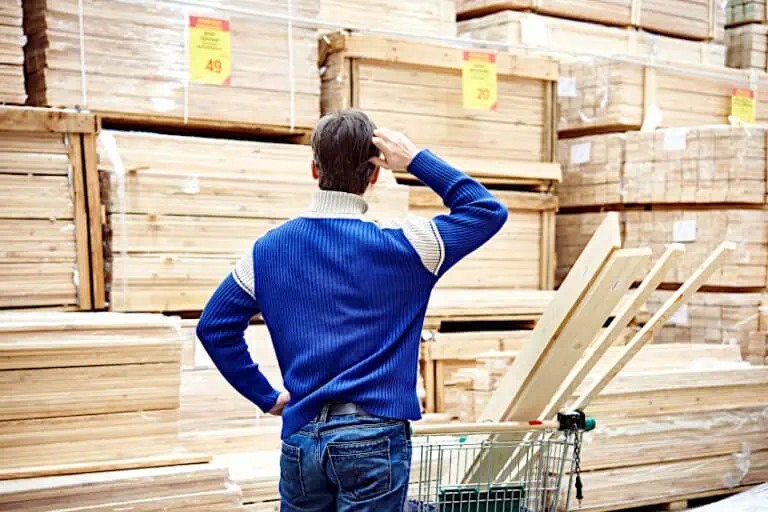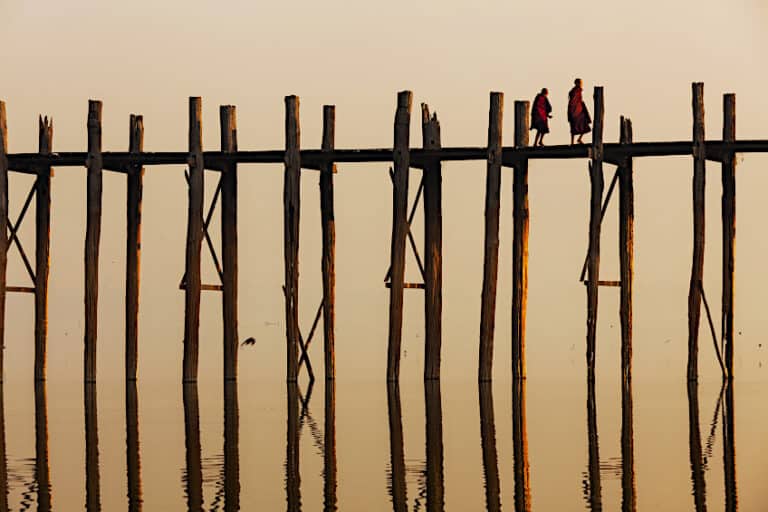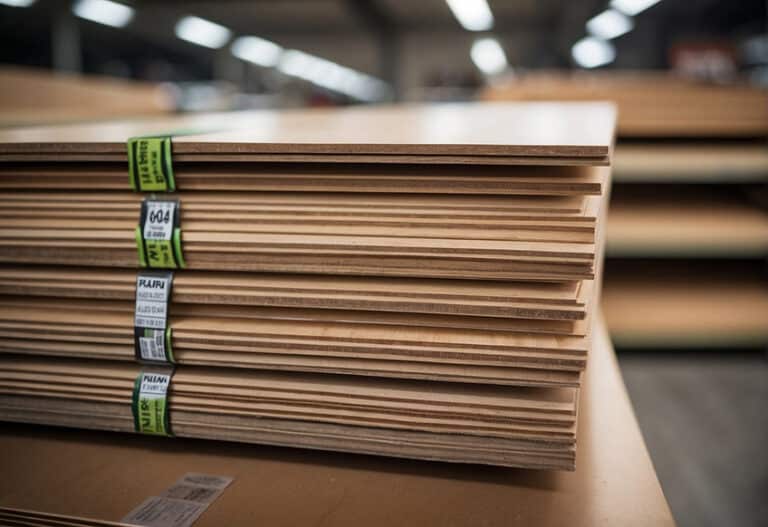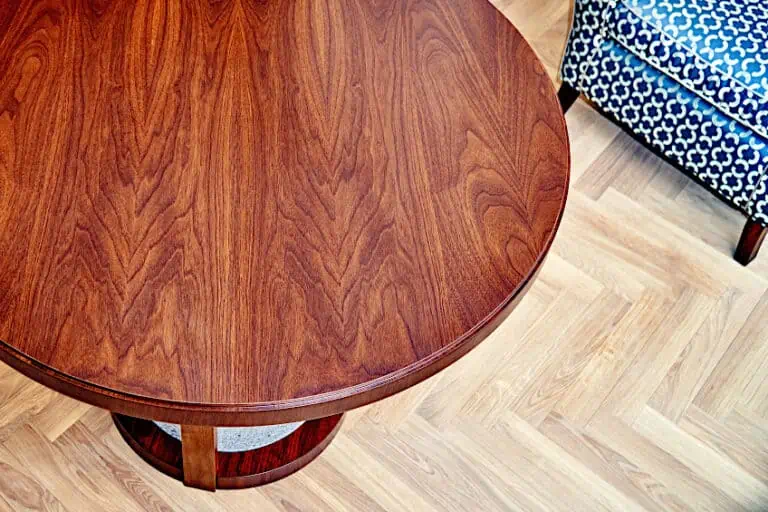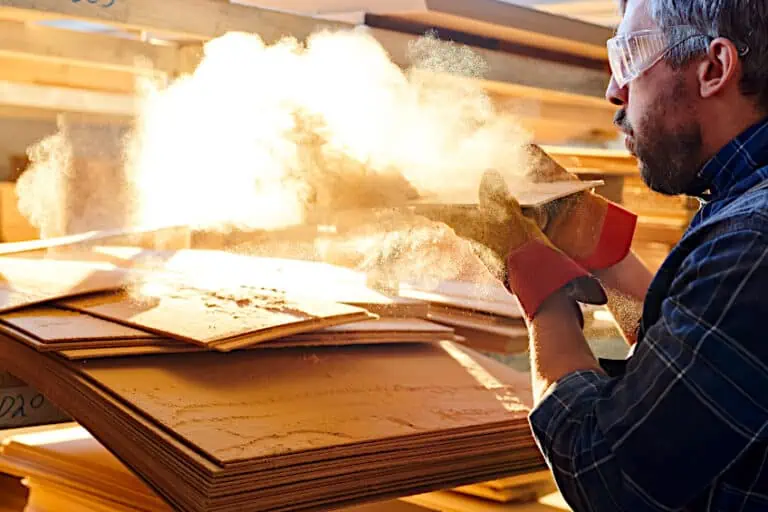Rot-Resistant Wood – Naturally Weather-Resistant Woods
Wood is one of the most versatile substances on earth, we use it for loads of things including cooking, building our homes, making our furniture, and even in the trim in our vehicles. Unfortunately, wood is subject to degradation over time and as a result, needs to be replaced and/or refurbished from time to time. This being said, there are certain species of wood that are far more resistant to decay than others, and because of this, they tend to be far more sought after in the woodworking industry. What are these wood species though? And what makes them so resilient to rot and decay? Let’s have a look at a few of them and see what exactly makes them so resistant to decay, as well as what you can do to extend their lifespans.
What Is Rot-Resistant Wood?
What is rot-resistant wood? Well, rot and decay are something that all organic life experiences including materials like metal and fabrics, but wood is especially susceptible to rot due to the environments that it inhabits, not to mention that many animals and microbes make trees their homes.
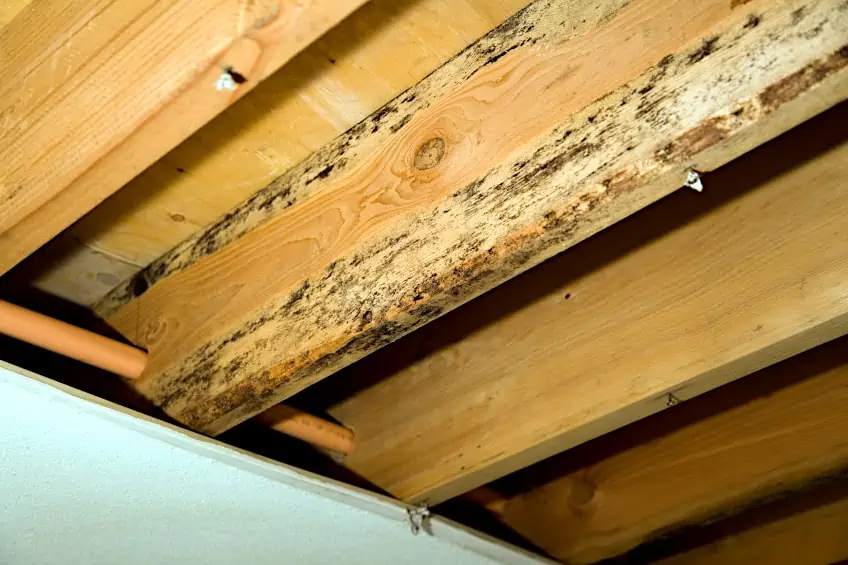
Rot occurs when the wood species is infected with animal or microbial life which eats away at the wood’s fibers causing its internal structures to weaken and sometimes fail. This lack of cohesion means that the wood becomes soft and is easily damaged by impact and abrasion, which isn’t good if you intend on using it for woodwork projects.
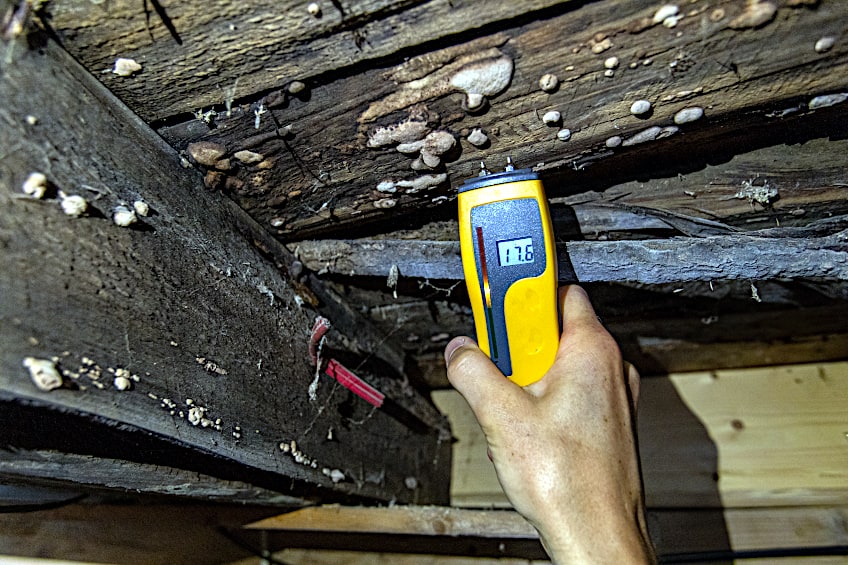
Rot-resistant wood is one of the most sought-after wood types on the market by both crafting enthusiasts and large corporations that manufacture furnishings in bulk. This, in turn, makes these wood species more expensive thanks to how supply and demand work, and it also means that rot-resistant wood species are some of the most poached wood species in the country.
You should keep in mind that although these species of wood are naturally resistant to rot, it doesn’t mean that you cannot or should not add layers of protection to surfaces made of rot-resistant materials. Adding things like Tung and/or linseed oil to the surface of your workpiece can help protect the surface of your workpiece while the wood’s inherent characteristics protect its interior.
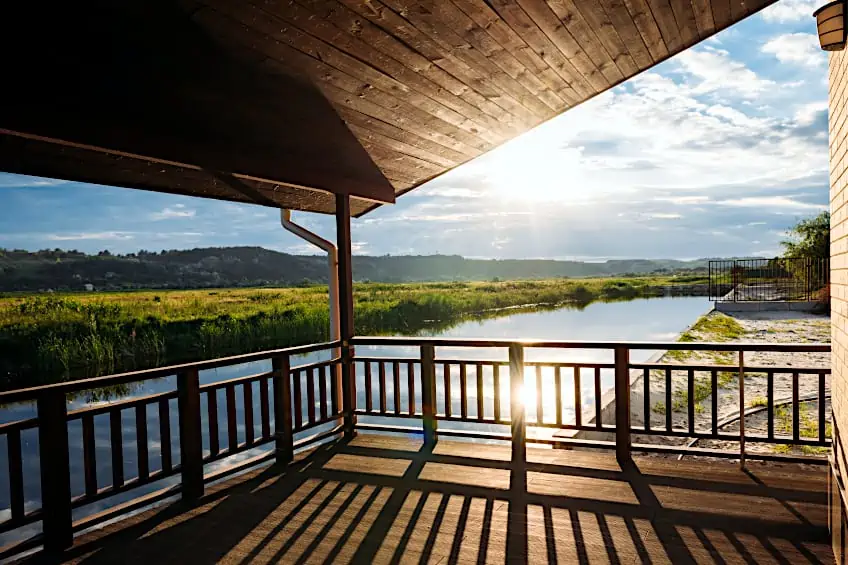
What Makes a Wood Species Rot-Resistant?
While there are certain wood species that are indeed special because of their ability to withstand rot and decay, it’s important to understand what the common characteristics are among these rot-resistant wood species. Why? Well, understanding what makes these wood species special can assist in identifying rot-resistant wood in your day-to-day life, and can provide greater insight into how you can make your wood furnishings even more resilient to rot and decay.
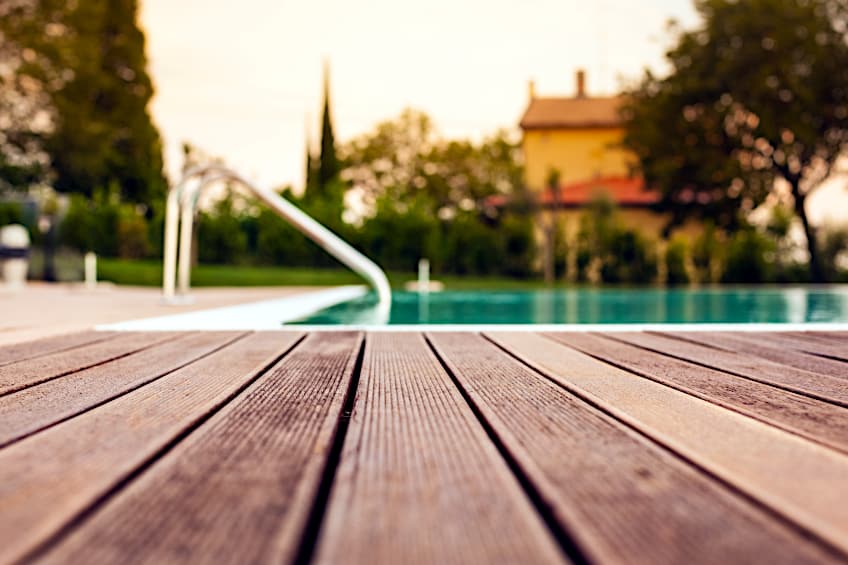
Naturally Occurring Oils
Naturally occurring oils are one of the most common ways that certain wood species protect themselves from rot and decay. Natural oils not only allow the wood species to protect themselves from insect infestation and fungal growths, but they also help keep the interior wood fibers of the tree well-nourished and ready for expansion.
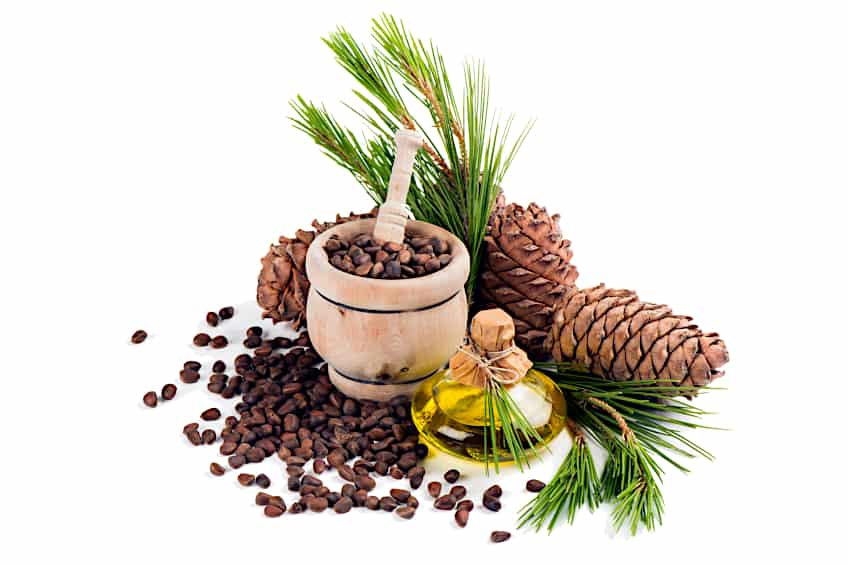
In fact, we even use some of these naturally occurring oils in our everyday lives. We mentioned that you can use linseed and Tung oil to protect your workpiece exterior surface, but did you know that these oils occur in both the interior and seeds of their respective trees of origin? This means that the same oils that protect the wood’s interior can be used to protect its exterior too!
How do these naturally occurring oils stop the spread of rot and decay you ask? Well, most natural oils inherently displace water or moisture (a good example is how oil floats on a body of water) which means that any moisture that would set into the wood’s fibers and cause rot or fungus is immediately dispelled. Keep in mind that naturally occurring wood oils need to be periodically reapplied to maintain this protective layer.
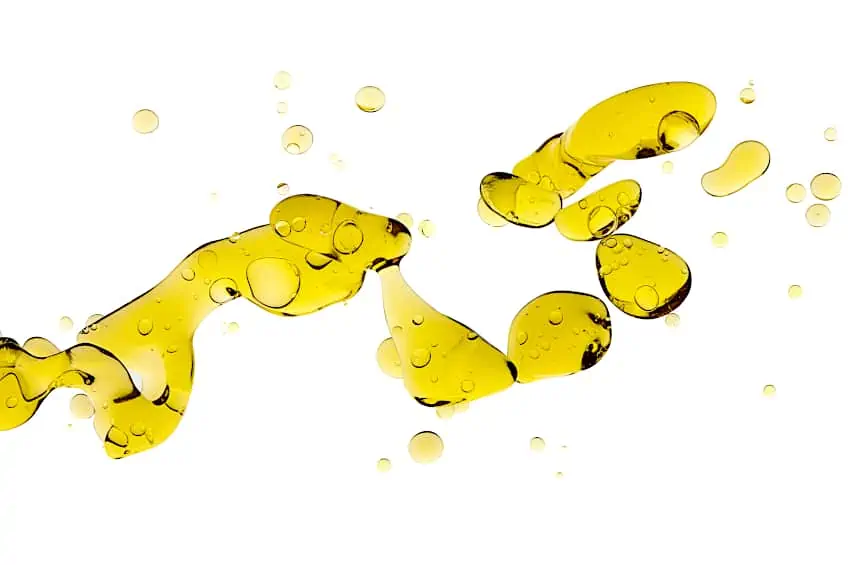
Tree Heartwood
For those of you who aren’t well versed in the jargon of woodworking, heartwood is the inner, older and more stable wood of a tree, which is different from the younger, more sap-rich wood (sapwood) found at the edge of the tree. Heartwood occurs when the tree’s sapwood is no longer needed to carry nutrients and water. The tree’s Sapwood is then replaced by Heartwood, which forms from the inside out. Heartwood is typically darker and harder than Sapwood and is often used to build furniture, stairs and other structures because of its strength and durability. It is also more resistant to pests and fungi than Sapwood.
The time needed to form heartwood depends on several factors, including the type of tree and its growing conditions. It usually takes a few years for a tree’s heartwood to be fully formed. Heartwood formation usually begins when the tree reaches an age of about 10 to 15 years and continues as long as the tree is alive. However, the exact duration depends on the type of tree. Some trees form heartwood more quickly than others, while for some trees the process may take longer.
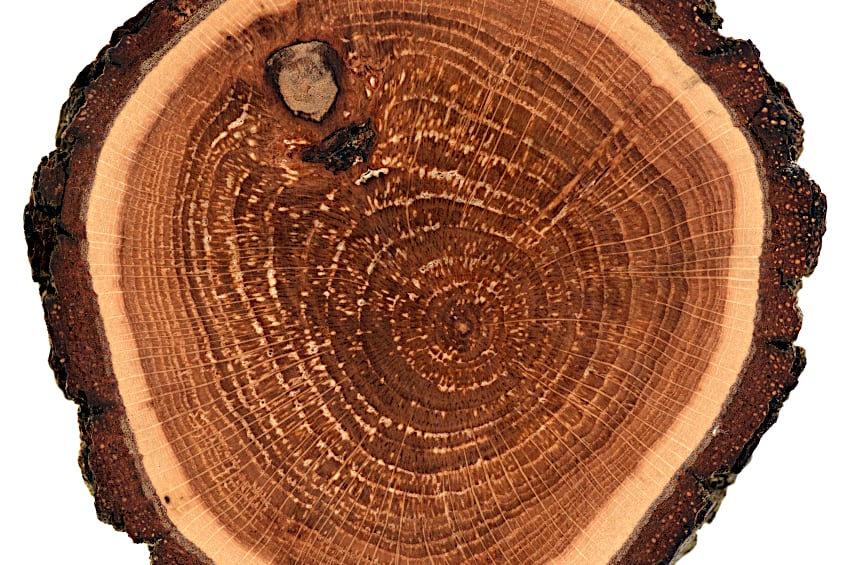
This type of wood is also used as weather-resistant wood which can be used for a number of outdoor applications. Weather-resistant wood is commonly used to fashion outdoor furnishings such as chairs, tables, decks, and even roofing. These wood species are further reinforced against the elements through the use of wood treatments such as wood stain and/or epoxy resin to ensure the longevity of the wood.
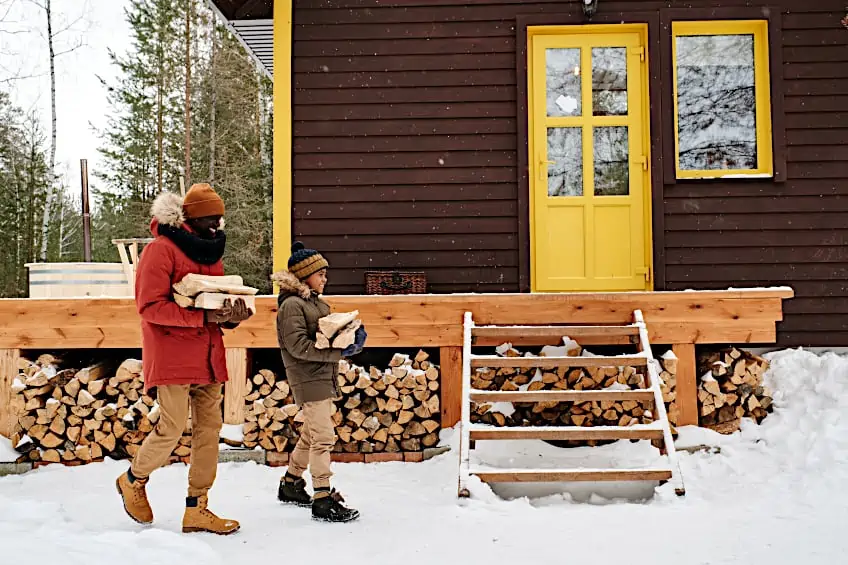
Weather-resistant wood is also known as water-resistant wood in some circles. Water-resistant wood is nothing like marine ply or laminated veneer, it is only resistant to the presence of moisture and therefore does not insulate the wood from its effects completely. Knowing this, if you intend to use water-resistant wood in an application where the workpiece will be submerged, we recommend trying other materials or marine plywood instead.
Wood Extractives
So, besides the two characteristics that we have mentioned so far, there is a third that greatly decreases the decay process and a wood’s ability to stand up to things like fungus and mold. This inherent characteristic that some woods possess is known as extractives, but what are extractives and what exactly do they do?
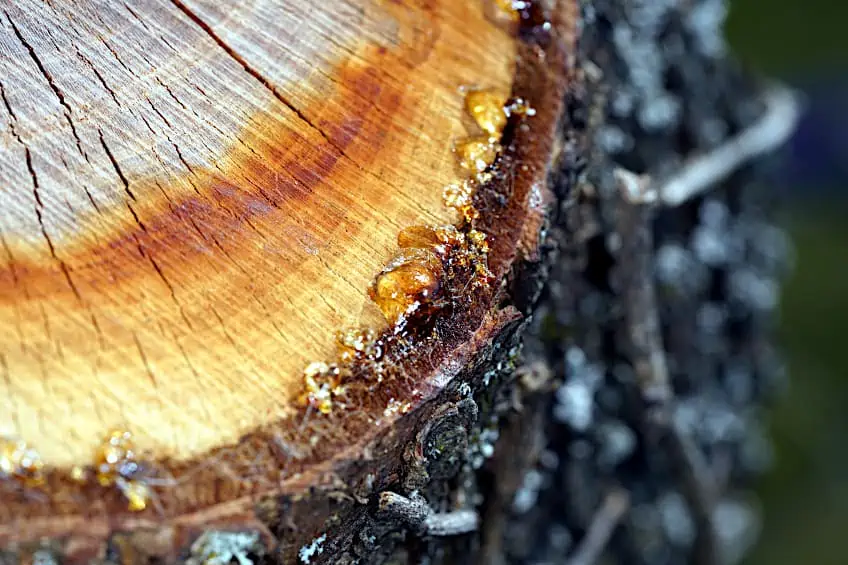
Extractives in wood are essentially naturally occurring substances that are present in the heartwood of a tree species. These extractives are namely things like resin and other substances like polyphenols and triglycerides, that discourage invasive organisms and decay caused by moisture simply by being present, which is pretty cool if you ask us.
It does seem that certain wood species need these extractives to survive as some studies show that removing extractives that have large amounts of naturally occurring deposits inside of them makes them decompose alarmingly quickly. This being said, wood species with naturally occurring extractives inside them tend to be pretty long-lived as a result.
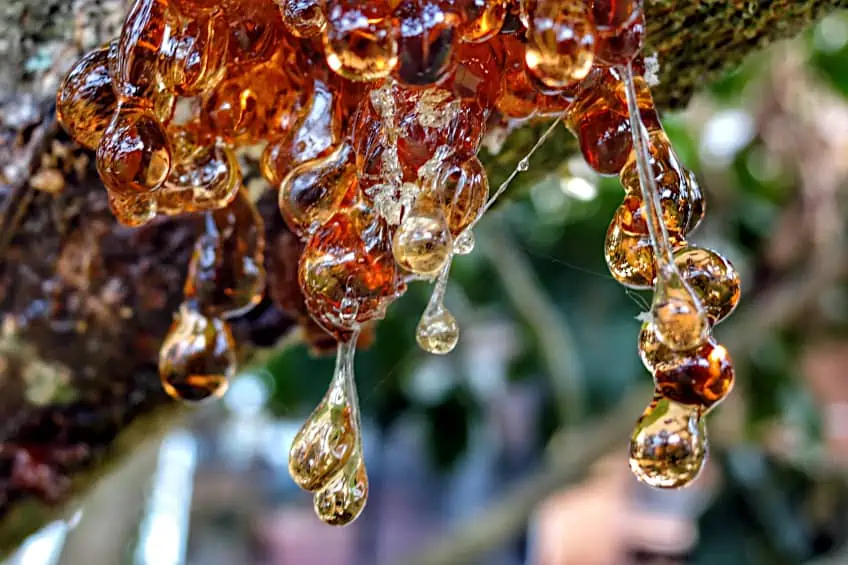
Besides grain density and the presence of natural oils which both assist in the prevention of rot, infestation, and overall decay in tree species, it seems that the presence of extractives is one of the defining features of wood species that have exceptionally long lives both while planted and part of furnishings.
Pressure Treatment
While this might not be an inherent natural quality of any wood species, pressure treatment does ensure that your wood is resistant to things like insect infestation, excessive absorption of moisture, and even mildew. Pressure treatment is one of the tried and tested methods of increasing the longevity of your wood, but what is it exactly?
All wood species have pores through which the wood breathes, and while it might not be in the same way that us humans do, the circulation of air through these recesses is what allows the wood species to absorb moisture. In the pressure treatment process though, these recesses are repurposed.
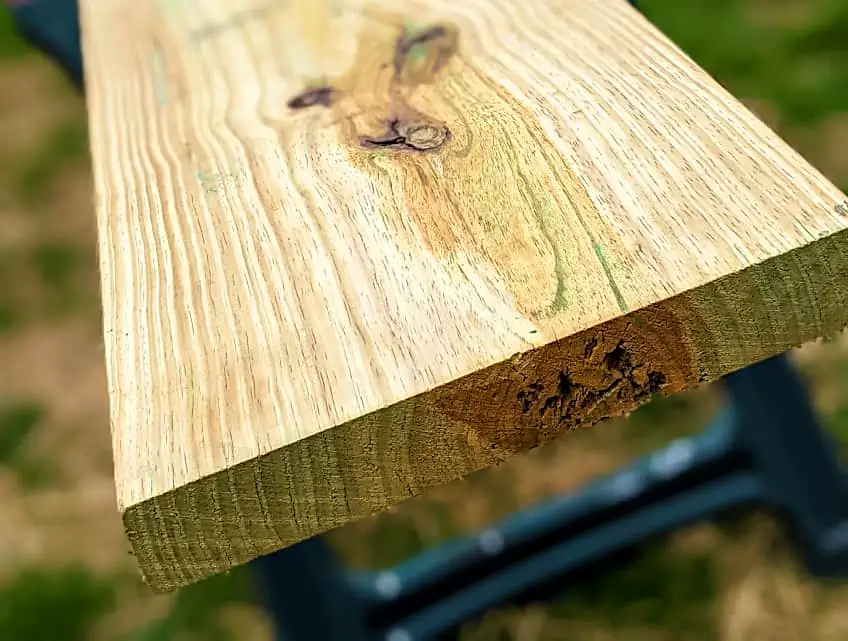
Essentially what happens is that wood is placed into a pressurized container, which is then flooded with a chemical. These chemicals are then pressurized into the fibers of the wood and removed from the chamber. During the drying process, the wood fibers will integrate these chemicals into their composition, which provides the board with protection from external forces. The wood is therefore permanently infused with these rot resistant chemicals hence the term pressure treated wood.

Which Wood Species Are Rot-Resistant?
While there are loads of rot-resistant synthetic wood types out there are only a handful of rot-resistant wood species available in North America. These wood species are typically sourced from trees that are really long-lived so you might notice that the price tags on these naturally rot-resistant wood species can be quite high, especially in regions where they aren’t grown. This being said, here are a few of the most common rot-resistant wood types in the form of our easy-to-use rot-resistant wood chart.
| Wood Species | Common Applications | Rot Resistance Rating |
| Redwood | Structural beams, flooring, furniture, trim pieces, outdoor decks | Extremely rot-resistant |
| Mahogany | Interior and exterior trim pieces, outdoor furniture, outdoor decks, vehicles trim pieces | Moderately rot-resistant |
| Cedar | Exterior decks, fences, gazebos, interior and exterior trim pieces, interior and exterior furnishings | Moderately rot-resistant |
| Mesquite | Construction of seafaring vessels, furniture, cabinetry, cooking, high end commissioned workpieces | Moderately rot-resistant |
| Walnut (black) | Interior and exterior trim pieces, musical instruments, kitchenware, whittling, vehicle trim pieces | Moderately rot-resistant |
| Teak | Construction of seafaring vessels, furniture, veneer, woodturning, whittling | Extremely rot-resistant |
| Oak | Load bearing applications, flooring, furniture, joinery, exterior decks, veneer, paneling, trim pieces. | Extremely rot-resistant |
| Cypress | Load bearing applications. Construction, piers, trim pieces, doors, seats, posts, railroad ties, bridges | Extremely rot-resistant |
| Yew | Archery bows, cabinetry, furniture, whittling, musical instruments, woodturning, veneer | Moderately rot-resistant |
| Black Locust | Woodturning, flooring, furniture, railroad ties, veneer, mine shaft construction, posts, fencing | Extremely rot-resistant |
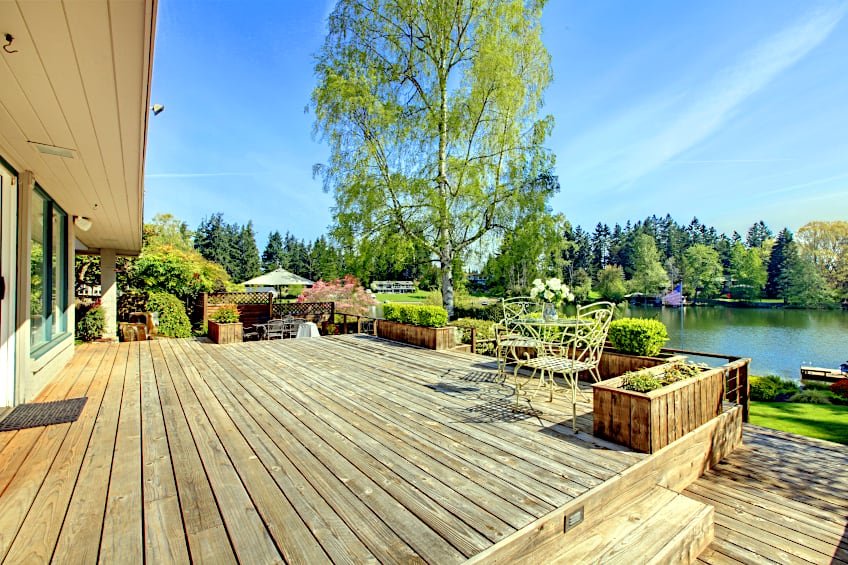
Redwood
Redwood is one of the most sought-after wood species out there, and in the US it’s used to make really high-end furnishings and even floor designs. Redwood is a hardwood indigenous to the coastal regions of the United States and might be one of the most famous woods in the world thanks to its robust and hard-wearing nature.
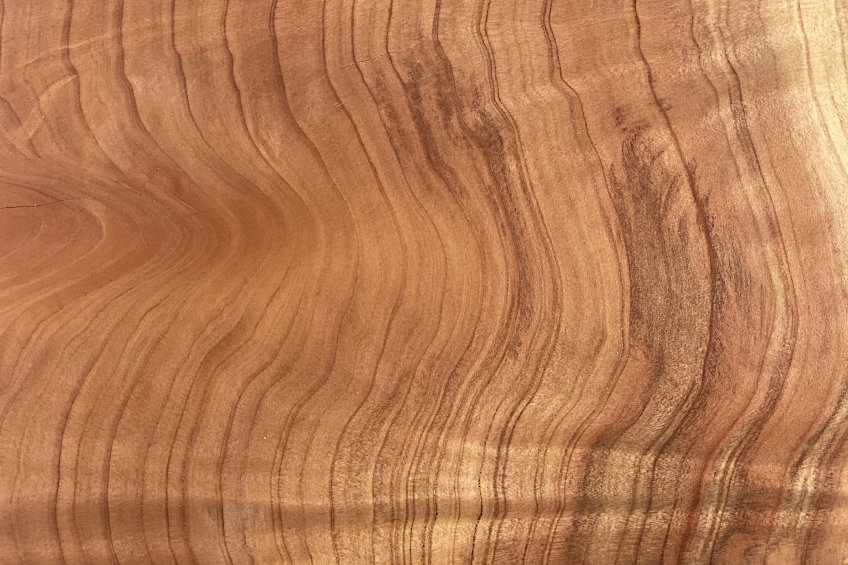
Redwood is made of mostly heartwood and some trees are well over 100 years old, which means that this tree species has had decades to develop a host of healthy extractives which it uses to resist the effects of rot and decay, not to mention that its grain is extremely dense. They’re also one of the tallest tree species in the world and considering that their trunks can reach a whopping 11 feet in diameter, which means one redwood can create hundreds if not thousands of furnishings when felled.
Mahogany Wood
If you’re looking for an equally effective but slightly more effective rot-resistant wood, then you would do well to consider the use of mahogany. This wood species is a soft hardwood that can be found all over the world, and because its properties make it really good for applications where moisture could be a problem, it’s also priced well above other wood species.
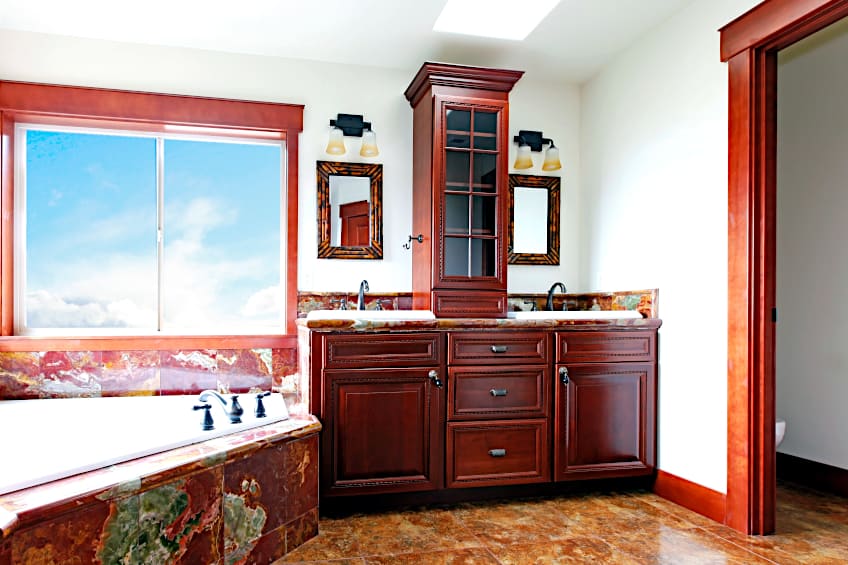
Besides its resistance to moisture and rot, mahogany is a pleasure to work with because it’s sturdy enough to be used in load-bearing applications while being soft enough to cut and turn into various forms. Mahogany actually resembles redwood quite closely in color (red of course), and is renowned for how well it retains its shape even under dramatic changes in temperature and/or stresses.
Because of these characteristics and the fact that it contains loads of natural oils which repel moisture, mahogany is frequently used for outdoor applications. It is typically used to make exterior tables, chairs, swing sets, and even wood decks, if you have the money to spend.
Cedar Wood
Cedarwood is one of those wood species that are good for pretty much any occasion, and it doesn’t do a sub-par job either. In fact, it’s so popular that if you asked the average wood crafter about what the ideal rot-resistant wood species was, the answer you’d likely get is cedarwood. Cedar is a naturally waterproof wood, and its natural wood oils can be used as a topical remedy for a number of illnesses.
Besides being good for weatherproofing and medicinal applications cedar is also a pleasure to work with if the application requires you to use wood treatments or surface coatings like varnish or paint. Cedar is particularly good at accepting these additions because it’s such an oily wood, and if these oils are locked in it can last for well over 40 years when fashioned into a workpiece.
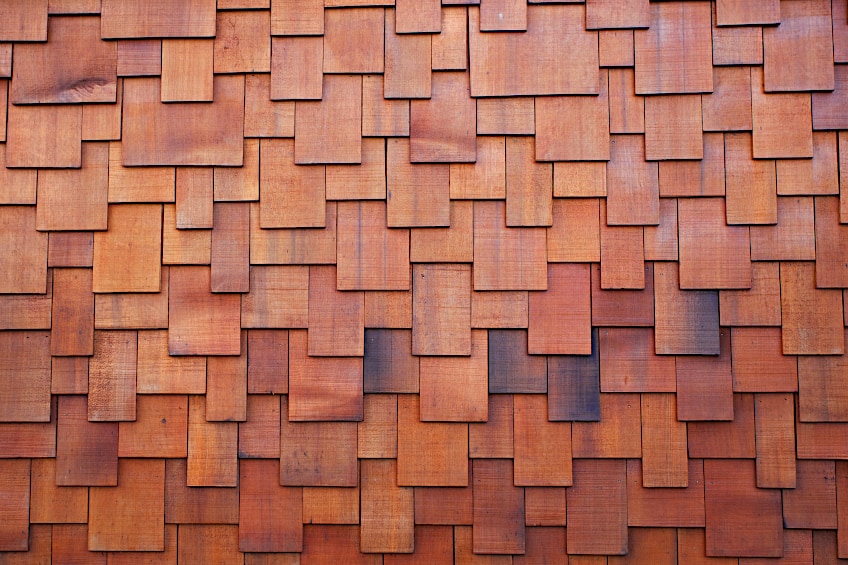
Cedarwood is a soft hardwood, but thanks to its oils, its wood fibers are tough to break, which makes it one of the most durable and flexible hardwoods on the market today. Looking after workpieces made of cedar is simple, and even when neglected this wood can last for an exceptionally long time compared to other woods in its class and price range.
Mesquite Wood
If you’re looking for a good wood for your next project and have some money to burn, then why not choose a beautiful slab of mesquite? Mesquite is an exceptional wood by any metric, it’s aesthetically appealing, incredibly strong, grows ridiculously quickly, and is a pleasure to work with regardless of the application. Think of it as walnut, only far more durable and in some cases even more expensive.
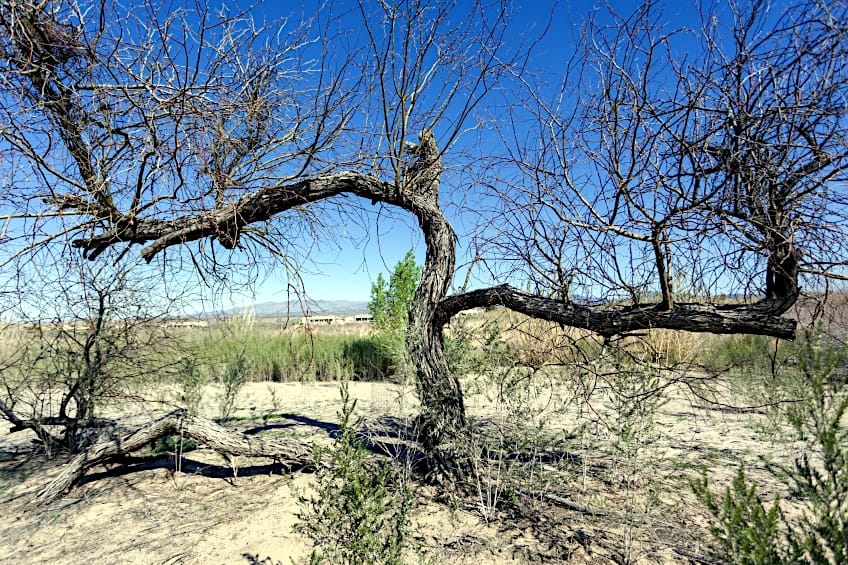
Mesquite also happens to be really easy to find, compared to some of the other wood species we’ve mentioned so far, but it can be quite knotty so it’s best to get this wood once it’s been refined. Mesquite is a naturally waterproof wood thanks to its dense hardwood, and because it’s a naturally knotty wood the workpieces fashioned from mesquite tend to be quite unique.
Walnut Wood
Walnut wood is one of the highest quality wood species around. How high do you ask? Well, considering that brands such as Rolls Royce use this wood species in the trim for their vehicles (at quite the cost) you can rest assured knowing that this wood is as high-end as it gets when considering exclusivity and quality as metrics.
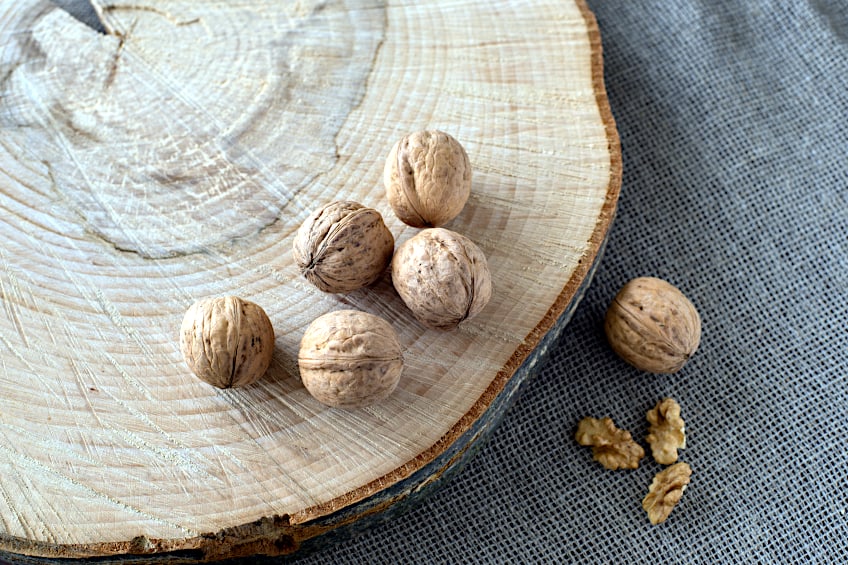
Walnut is a dark and dense hardwood that can be used to create beautiful one-of-a-kind finishes. It’s also extremely sturdy, although we wouldn’t recommend using it for load-bearing applications. This wood is highly resistant to rot and fungus, although its pours are quite big so unless you treat your walnut you might find some insects making it their home.
What is walnut wood used to make? Well as we mentioned previously because it’s so high priced it’s mainly used to create trim pieces, but black walnut is used to make things like shelving and high-end furniture for those willing to pay for such exclusive furnishings. It can also be used to make various musical instruments and even kitchenware in some instances.
Teak Wood
If you’re looking to set your workpiece apart by using an interesting wood species, but don’t want to sell one of your internal organs to get your hands on walnut, why not give teak wood a try? Teak isn’t indigenous to the US, and as a result furnishing and their subsequent finishes are entirely unique, and it’s not too expensive either.
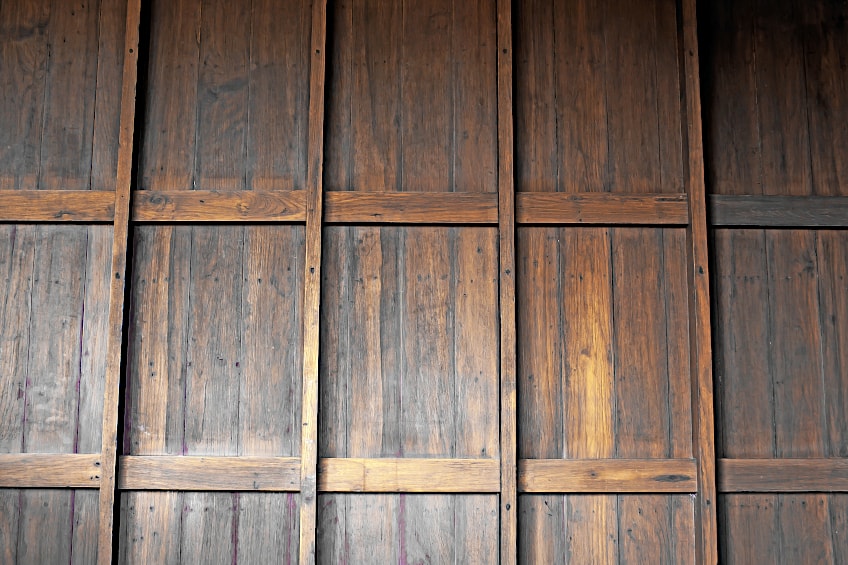
Teak is yet another long-lived and naturally waterproof wood that has historically been used primarily in the boat-making industry. Vessels created with this wood are used for fishing and commuting purposes by many southern Asian communities. This is all thanks to teak wood’s inherent extractive rich nature.
Teak wood is a shiny gold-brown hue and can be quite slick, but thanks to the high concentration of extractives present in the fibers of the wood it tends to resist adhesives, making it challenging to glue. This can be annoying especially if you’re using conventional woodworking techniques, but it’s well worth the finish and longevity you’ll benefit from, especially if you choose to stain and/or varnish your workpiece.
Oak Wood
Even if you have little to no woodwork knowledge you probably know that oak is a high-quality wood species. Oak is one of the most popular woods in both the crafting and woodworking industry because of its lustrous aesthetic, incredibly dense heartwood, and all of its natural oils that make it impervious to moisture damage and rot.
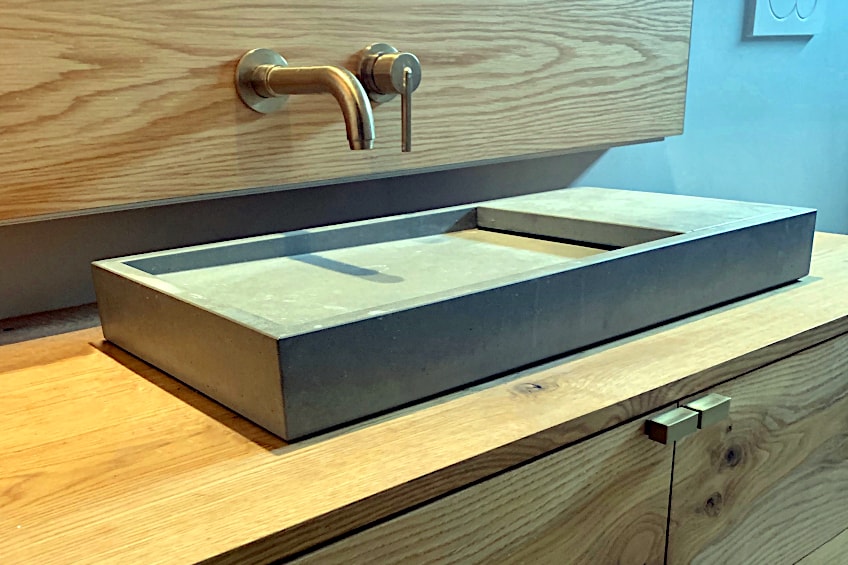
Oak is used for a number of different applications both indoors and out. Oak is used to make everything from bed frames to couches and even entire floors. This wood is incredibly versatile and possesses impressive load-bearing capabilities, and as you’ve probably figured out by now, this means that it’s also relatively expensive but not as much as some of the other woods we’ve mentioned so far.
Oak tends to be a light brown or yellow in color, and when stained or treated it can either become really dark or slightly lighter depending on the product used. It’s a great outdoor wood too, but if you’ve used white oak specifically you should do regular maintenance to ensure it doesn’t warm over time.
Cypress Wood
While regular cypress wood is quite resistant to rot and moisture, if you’re looking for the really good stuff, you should try out bald cypress. This tree tends to grow really close to water sources which means that it’s yet another naturally water-resistant wood species. Through years of conditioning bald cypress has developed a number of extractives and natural oils which ensure that moisture, insects, and rot are no longer a concern for its species.
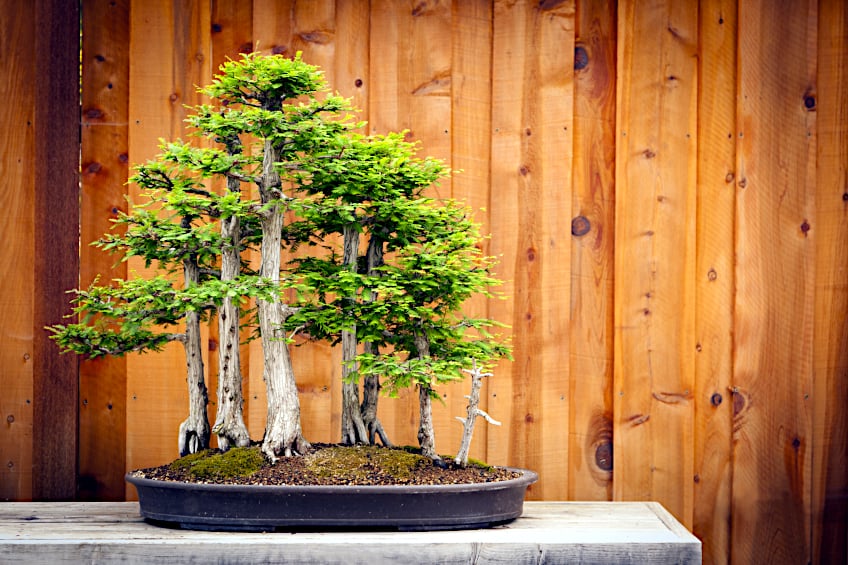
Bald cypress tends to be really light in color in most cases, but if you’re going to be using it to create furnishings, we recommend taking the time to find some in a darker hue as it’s far easier to treat and work with. Cypress is also extremely challenging to cut and requires an especially sharp blade to get the job done. Cypress wood is typically used to create docks and outdoor decks in particularly humid areas.
Yew Wood
Yew wood is a bit strange since it’s not quite the same as some of the hardwoods that we’ve looked at so far. This wood species is a lot like cypress, in that it’s grown in moisture-rich environments, but unlike cypress, it’s not exactly dripping with extractives. On the other hand, it does naturally produce a chemical that is poisonous to insects, so you won’t have to worry about any unwelcome guests should you choose to work with this wood.
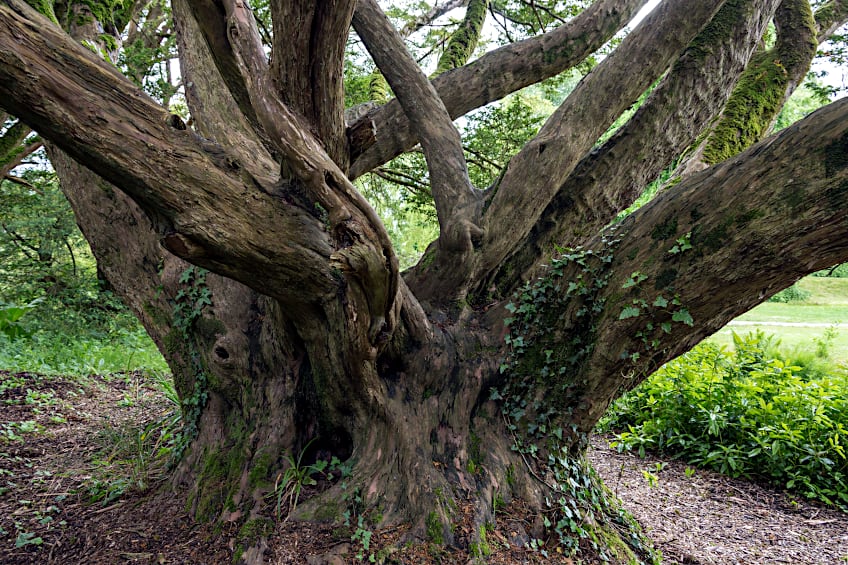
Yew wood is typically dark brown in color, and thanks to the oils present in its wood fibers it has a natural shine to it that no other wood seems to be able to compete with. Unlike some of the other wood species we’ve mentioned so far, yew wood is exceptionally good at accepting wood glue which makes it the ideal cabinetry material.
Black Locust Wood
If you don’t mind putting in some elbow grease and are willing to work with one of the heaviest wood species on the planet, we think that black locust board might be right up your alley. This wood species is incredibly durable and has the largest load-bearing capacities of any wood species that we have mentioned so far.
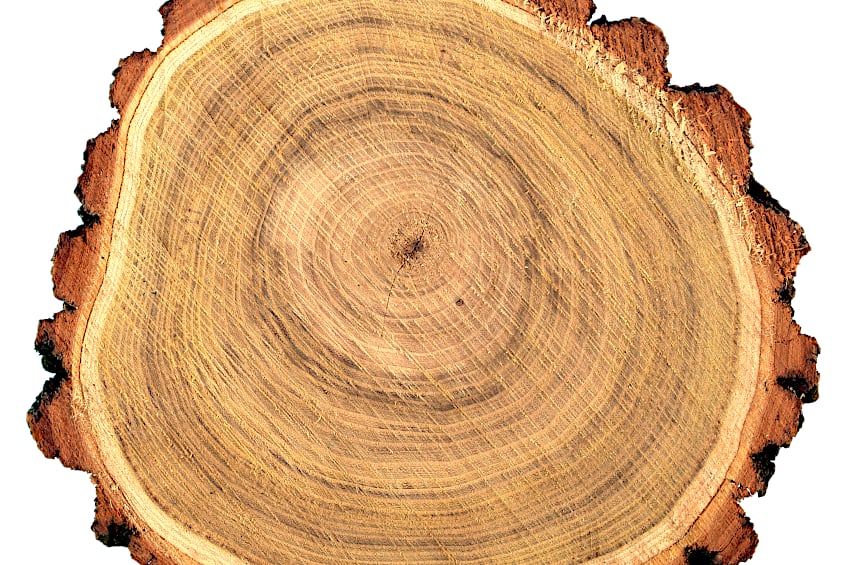
This wood is straight-grained and is so incredibly dense that it tends to dull table saws and axes. So, if you’re going to work with this wood species it’s best to know what you’re about to get yourself into. The color of black locust varies between tree species and regions, but all variations tend to get darker with age and are extremely resistant to most forms of rot, decay, and insect infestation.
This wood is also pretty reasonably priced, but since it can be challenging to work on and is used for large-scale projects, most crafters tend to avoid this wood species. Although, if you’re looking for an affordable, durable wood species that also happens to be rot-resistant, you’d be hard-pressed to find a better option than this wood.
Now that you know which properties make wood inherently resistant to rot and insect infestation, have your very own rot-resistant wood chart, as well as knowledge of some of the best woods out there for applications that require rot-resistant wood species, it’s time for you to get out there and put your new-found knowledge to the test. Remember to always ensure that you choose the right wood for the size and intended applications of your workpiece and to always wear the appropriate personal protective gear when working with a wood board.
View our Weather Resistant Wood web story here.
Frequently Asked Questions
Does Pressure-Treated Wood Rot?
Does pressure treat wood rot? Well, all biological materials tend to decay over time, the only difference being that some are more resistant to exterior forces that accelerate this process than others. Pressure-treated wood is one of these materials and therefore will still fall victim to natural decay over time.
How to Keep Wood From Rotting?
Wondering how to keep wood from rotting? Well, there are a few options for you to choose from. Firstly, pick a naturally rot-resistant wood, and then apply and maintain a wood treatment like linseed or Tung oil to ensure that things like moisture, insects, and fungus don’t infect your workpiece. Finishes like oil-based paints and resin coatings also prevent rot and decay.
Does Cedar Rot?
Does cedar rot? While cedar is incredibly resistant to rot and damage from moisture it is not completely immune to the effects of wood rot. To ensure that your cedar workpieces last, do your best to apply and regularly maintain a wood treatment or paint.
What Wood Is Good for Outdoors?
Wondering what wood is good for the outdoors? Well, there are loads of options, and depending on your specific application you will have few options available to you. Some of the most popular choices are redwood, cedar, oak, and even cypress wood thanks to their versatile and hard-wearing nature.

I have been into woodworking since 2005 and woodturning since 2011. Because of my love for wood and woodworking, I started woodhappen.com to teach other enthusiasts about how to finish and seal wood, the best woodworking tools, the different types of wood, and everything else related to woodworking! Read more about me here.

